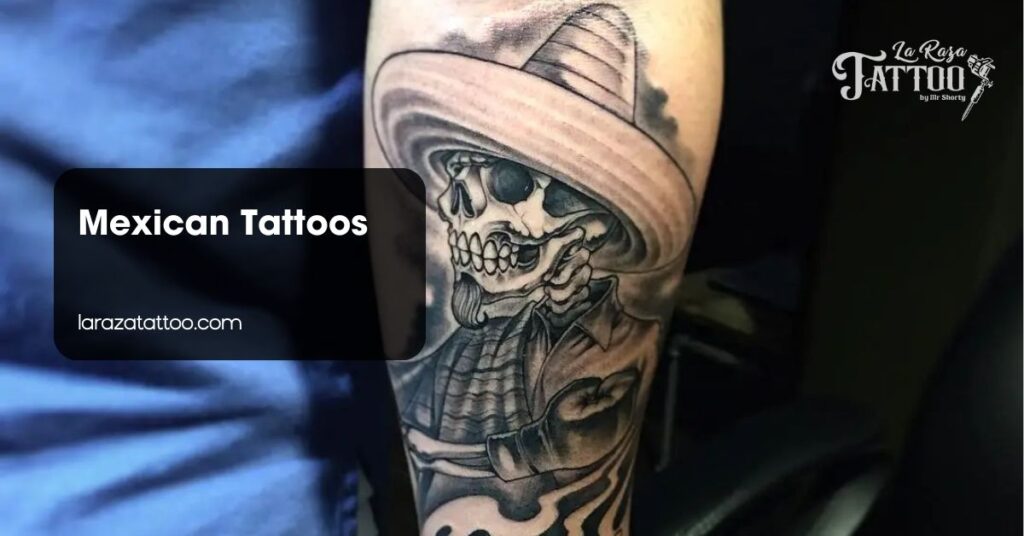Mexican tattoos are more than just ink on skin; they’re vibrant stories woven into your identity. Each design reflects deep cultural roots, celebrating heritage, history, and artistry. Whether you’re drawn to the intricate patterns of traditional designs or the bold statements of modern interpretations, there’s a Mexican tattoo that resonates with you.
Imagine adorning your body with symbols that represent strength, love, or even the spirit of the Day of the Dead. These tattoos connect you to a rich tapestry of traditions and beliefs that span generations. By choosing a Mexican tattoo, you’re not just making a fashion statement; you’re embracing a legacy that celebrates life and death in a beautifully unique way. Ready to explore this captivating industry? Let’s jump into the artistry and meaning behind Mexican tattoos that can transform your skin into a canvas of culture.
Understanding Mexican Tattoos
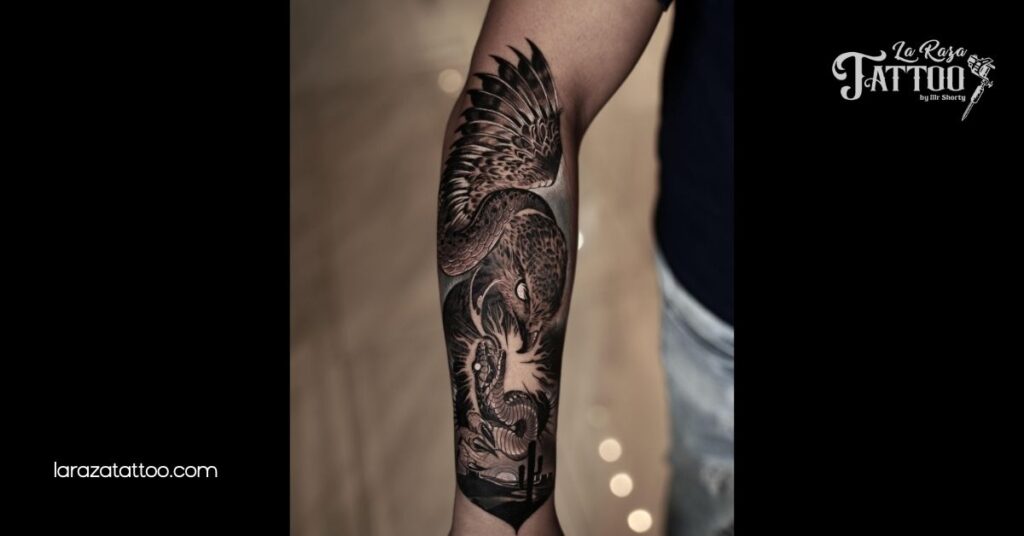
Exploring Mexican tattoos often reveals a rich tapestry of stories, beliefs, and emotions. Each design holds important meaning, making them much more than just body art. You might encounter symbols like skulls, which celebrate the Day of the Dead, symbolizing the connection between life and death.
Identifying cultural themes can deepen your appreciation for these tattoos; for example, traditional designs often reflect Aztec and Mayan influences, representing strength and resilience. Consider florals such as roses, which may symbolize love and passion, tying personal narratives to cultural heritage.
Appreciating the artistry involved is essential; skilled tattoo artists often take time to ensure each piece is unique and deeply personal. Trying to connect your personal experiences to these designs can create a bond that enhances their significance.
Recognizing these tattoos as a form of storytelling encourages you to explore the history behind each symbol. Celebrating life, love, and loss is central to the essence of Mexican tattoos, making each piece a powerful expression of identity and culture.
The History of Mexican Tattoos
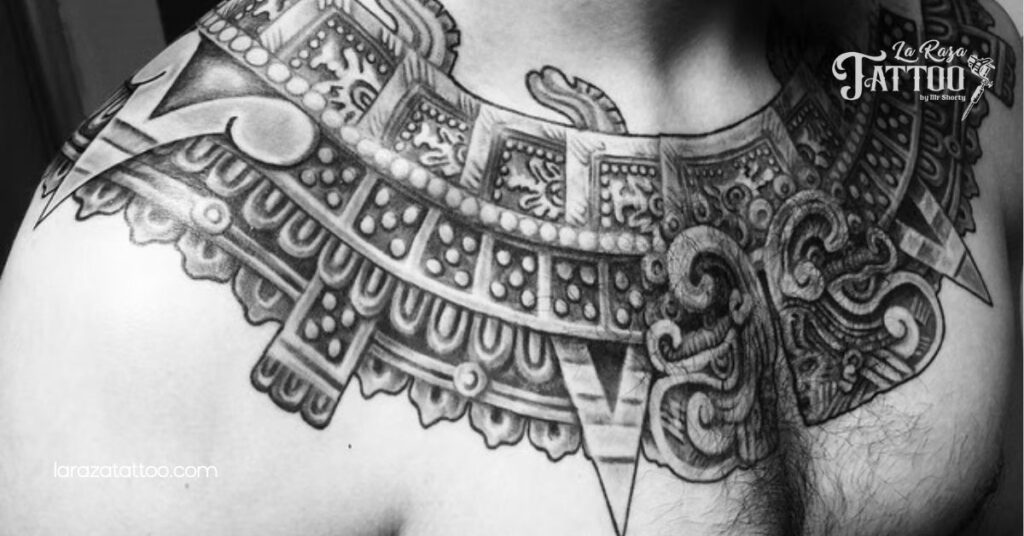
Mexican tattoos have a rich legacy shaped by various cultures throughout history. This section delves into the pre-Columbian influences that set the foundation for these beautiful body art forms.
Pre-Columbian Influences
Ancient civilizations in Mexico, like the Aztecs and Mayans, infused their tattoos with spiritual and social significance. Tattoos weren’t just for decoration; they symbolized status and accomplishments. You’d find warriors and priests adorning their skin with tattoos representing their divine connections and roles within society.
Common motifs included animals such as jaguars, which stood for power, and snakes, symbolizing healing. Other popular symbols were condors, sun, moon, trees, and mountain peaks. Each of these designs reflected a deep connection to the spiritual industry and highlighted the cycles of life that these cultures revered.
Spanish Colonial Impact
The arrival of Spanish colonizers in the 16th century brought important change to the tattooing industry in Mexico. Spanish Catholic influences imposed new religious themes, blending traditional indigenous symbols with European elements. As a result, you can see tattoos evolve to include Christian motifs alongside pre-Columbian imagery.
This cultural fusion created a unique tattooing tradition that reflected both indigenous heritage and colonial history. Many modern tattoo designs continue to honor this blend, showcasing the resilience of Mexican cultural identity even though external influences. Tattoos serve as a testament to both ancient legacies and the adaptability of artistic expression in Mexico throughout the ages.
Popular Designs in Mexican Tattoos
Mexican tattoos showcase stunning artistry and profound meaning. Each design tells a unique story rooted in culture and tradition.
Sugar Skull Tattoos

Sugar skull tattoos thrive on vibrant colors and intricate details. You’ll often see these designs connected with the Day of the Dead, celebrating the lives of those who’ve passed. Elaborate patterns, flowers, and symbols adorn these skulls, embodying the belief that life persists beyond death. Many wearers personalize their sugar skull tattoos to reflect their memories of loved ones, making each piece truly unique. They represent resilience, love, and remembrance, celebrated through art that honors connections between the living and the deceased.
Aztec and Mayan Symbols

Aztec and Mayan symbols capture the essence of ancient wisdom and spirituality. Many designs feature powerful animals like jaguars and eagles, which symbolize strength and protection. You might notice elements reflecting natural forces, too, representing the cycles of life and death. Tattoos inspired by these civilizations invite wearers to embrace their heritage and the stories carried through generations. Each symbol conveys its message, reinforcing identity and cultural pride.
Religious Imagery and Iconography
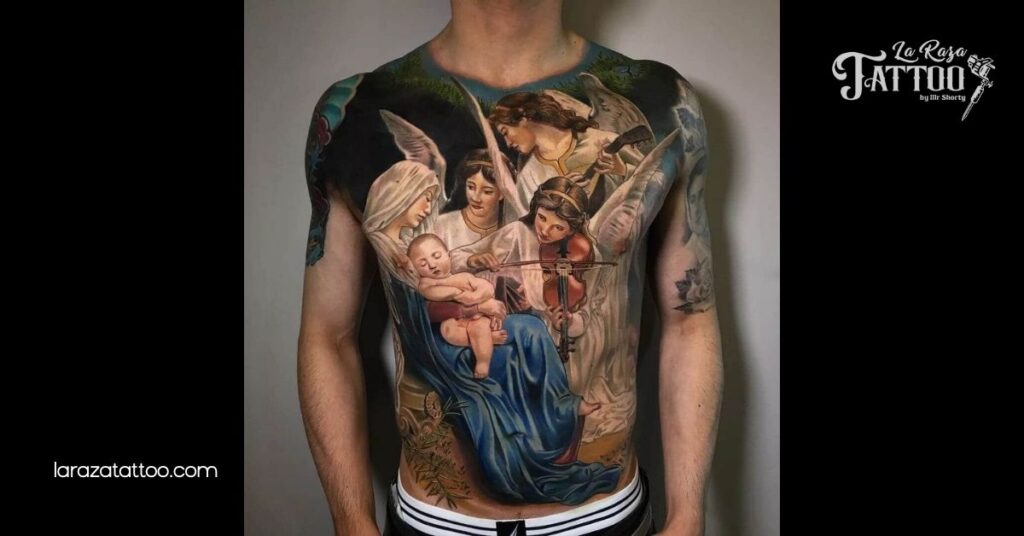
Religious imagery in Mexican tattoos often highlights the intertwining of faith and tradition. You’ll find depictions of saints, the Virgin of Guadalupe, and crosses, each representing a unique aspect of spirituality. These designs serve as personal reminders of devotion and hope. Plus, they reflect the rich history of colonization, as indigenous and European influences blend to create visually powerful statements. Through these tattoos, you can express your beliefs and connect with the deeper meanings behind them.
The Cultural Significance of Mexican Tattoos
Mexican tattoos represent a rich tapestry of cultural identity, history, and personal expression. You’ll find that these tattoos are deeply rooted in the legacies of ancient civilizations and continue to resonate today.
Tattoos as a Form of Identity
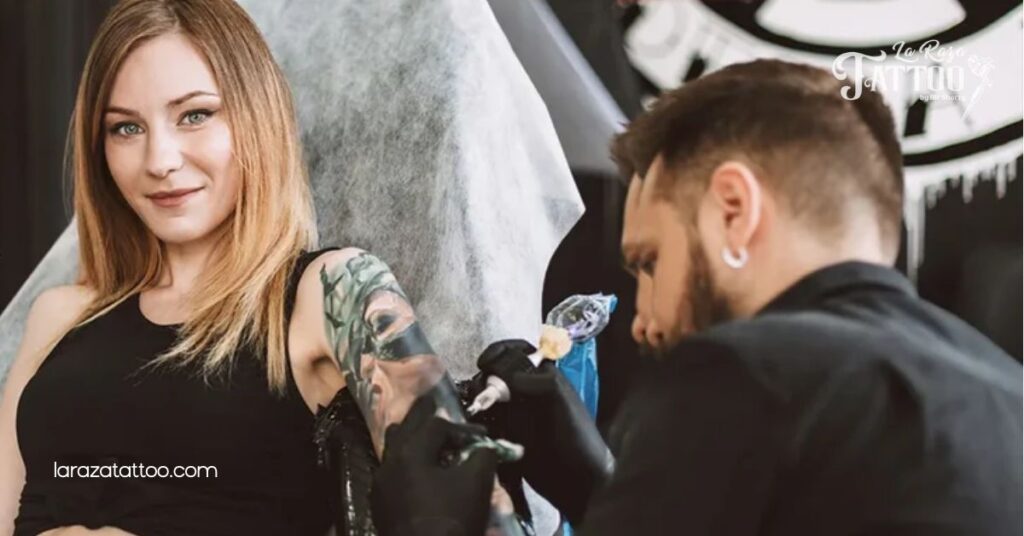
You’ll discover that tattoos often serve as powerful symbols of personal and cultural identity. Many individuals wear designs that connect them to their heritage, showcasing vibrant aspects of Mexican culture. Your tattoo can symbolize not just your personal story, but also a collective narrative that links you to ancestors and traditions. Some designs, like those inspired by ancient tribes, convey messages of strength and resilience, reminding you of your roots. Also, tattoos can signify important life events, beliefs, or values you hold dear, allowing you to wear your identity proudly.
Tattoos in Mexican Folk Art
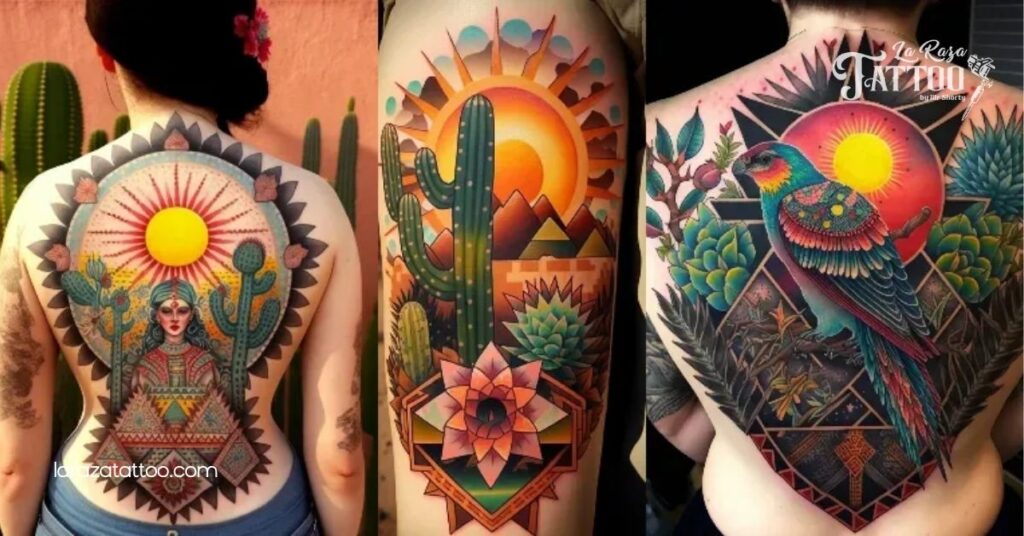
Tattoos also play a important role in the area of Mexican folk art. Many intricate designs draw inspiration from traditional forms of artistic expression, like murals and pottery. You might notice that popular motifs such as sugar skulls echo themes from the Day of the Dead, celebrating life and death through colorful and detailed representations. Unique patterns often illustrate the rich biodiversity in Mexican culture, from flowers to animals. Besides, the blending of indigenous influences with colonial art creates a distinctive visual language, making each tattoo a form of storytelling that captures the essence of what it means to be Mexican.
The Process of Getting a Mexican Tattoo

Getting a Mexican tattoo is an exciting journey that begins with the right steps. You’ll want to ensure every aspect reflects your vision and heritage.
Choosing a Skilled Tattoo Artist
Finding a skilled tattoo artist is crucial. Look for someone who specializes in Mexican designs, particularly those rooted in Chicano or traditional Mexican art. Research their portfolios online to see previous work, paying attention to their use of bold lines and intricate shading. Feel free to ask for recommendations from friends or family who’ve had similar tattoos. Captivating in a consultation is vital. Discuss your ideas and any personal stories you want included. A good artist will provide insights, helping you refine your vision to create a meaningful piece.
Preparing for Your Tattoo Session
Preparation for your tattoo session makes a important difference. Be sure all your questions are answered before the appointment. Keep your skin hydrated for a few days leading up to the session, as this can aid in the tattooing process. Dress comfortably on the day of your appointment and avoid using alcohol or blood thinners to minimize bleeding. Arriving well-prepared helps ensure the experience is as smooth as possible. Trust your artist to set up a sterile environment with quality tools. You’ll feel more relaxed knowing their workspace meets hygiene standards, eventually improving your tattoo experience.
Caring for Your Mexican Tattoo
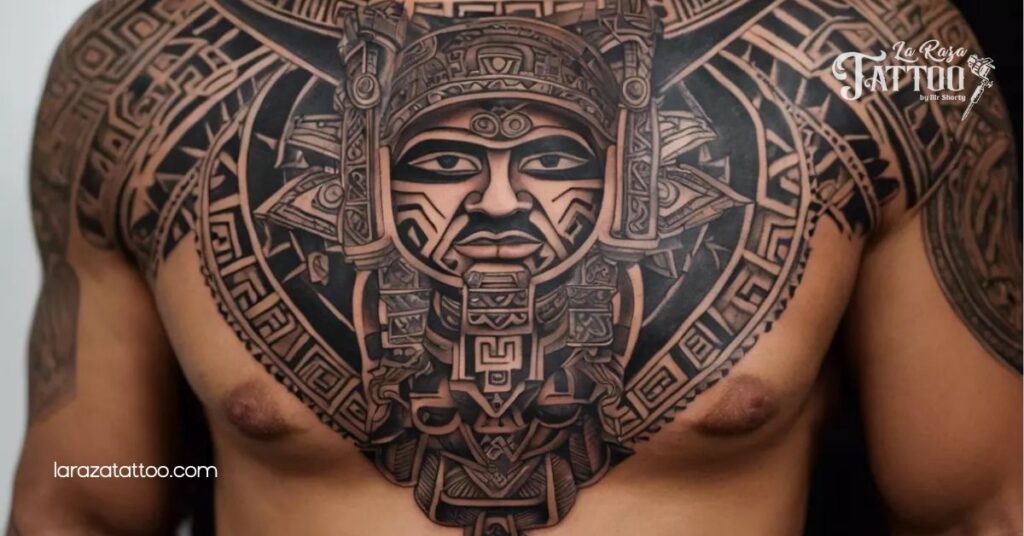
Caring for your Mexican tattoo is essential for ensuring it heals properly and maintains its vibrant colors. Follow these key tips and avoid common pitfalls to keep your ink looking fresh.
Aftercare Tips for Longevity
- Immediately cover the tattoo with a surgical-type patch or dressing. This protects the area from bacteria, sunlight, and friction for at least 3-4 days, depending on the tattoo’s size and location.
- Wash your hands thoroughly before touching your tattoo to prevent any infections. Clean hands are your first line of defense.
- Gently cleanse the tattoo with mild, fragrance-free, and neutral soap using warm water. You should steer clear of harsh soaps, loofahs, or washcloths that can irritate the skin.
- Pat the tattoo dry with a clean towel. You want to let it air dry for a few minutes instead of rubbing the area, which could damage the healing skin.
- Apply a thin layer of a tattoo-exact moisturizer or lotion. Keeping your skin hydrated will help maintain the tattoo’s vibrancy as it heals.
Common Mistakes to Avoid
- Don’t remove the covering too soon. Taking off the dressing before the recommended time can expose your tattoo to dirt and bacteria.
- Avoid soaking the tattoo in water. Bathing or swimming can cause your tattoo to fade or become infected before it fully heals.
- Never scratch or pick the tattoo. This can lead to scarring or color loss, and it’s crucial to let any scabs fall off naturally.
- Don’t apply sunscreen too early. Until your tattoo fully heals, keep it out of direct sunlight. After healing, use a high SPF to protect the colors.
- Stop using harsh exfoliants. Products with strong chemicals can irritate your skin and compromise the healing process. Stick to gentle soap and moisturizer.
By following these aftercare tips and avoiding common mistakes, you can ensure that your Mexican tattoo remains a beautiful and vibrant expression of your cultural identity for years to come.
Conclusion
Mexican tattoos are more than just body art; they’re a powerful expression of cultural identity and personal storytelling. Each design carries deep meanings and reflects a rich heritage that connects you to your roots. Whether you choose a sugar skull to honor loved ones or an Aztec symbol to embody strength, these tattoos celebrate life, love, and resilience.
By understanding the significance behind each motif, you can make a more informed choice that resonates with your personal journey. Remember to select a skilled artist who can bring your vision to life while respecting the cultural traditions embedded in the art. With proper care, your Mexican tattoo will remain a vibrant testament to your identity for years to come. Embrace this beautiful form of expression and let it tell your story.
Frequently Asked Questions
What is the significance of Mexican tattoos?
Mexican tattoos hold cultural importance, serving as vibrant expressions of identity and heritage. Each design is rich in meaning, reflecting traditions, beliefs, and personal stories. They often celebrate life, death, love, and resilience, inviting individuals to connect deeply with their cultural roots.
What common motifs are found in Mexican tattoos?
Common motifs include sugar skulls, roses, Aztec and Mayan symbols, and religious imagery. Sugar skulls celebrate the deceased, while roses symbolize love. Aztec and Mayan designs represent strength and resilience, while religious symbols remind individuals of their faith and traditions.
How has the history of Mexican tattoos evolved?
Mexican tattoos have evolved through various cultural influences. Pre-Columbian civilizations used tattoos for social status and spirituality, while Spanish colonization introduced new themes, creating a unique blend of indigenous and European designs that reflect both heritage and colonial history.
What should I consider before getting a Mexican tattoo?
Before getting a Mexican tattoo, research skilled artists who specialize in traditional designs. Review their portfolios and schedule consultations to discuss your vision. Ensure you understand the cultural significance of the design you choose, as it will represent your personal identity.
How can I maintain the vibrancy of my Mexican tattoo?
To maintain vibrancy, cover your tattoo with a protective dressing after application. Wash hands before touching it and cleanse the area gently with mild soap. Avoid soaking the tattoo, picking at it, and applying sunscreen too early to ensure long-lasting color.
